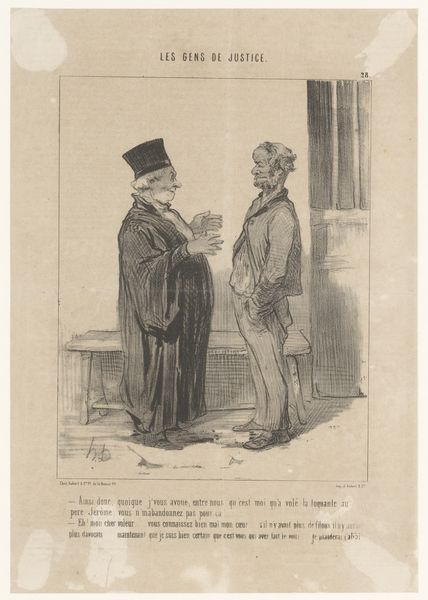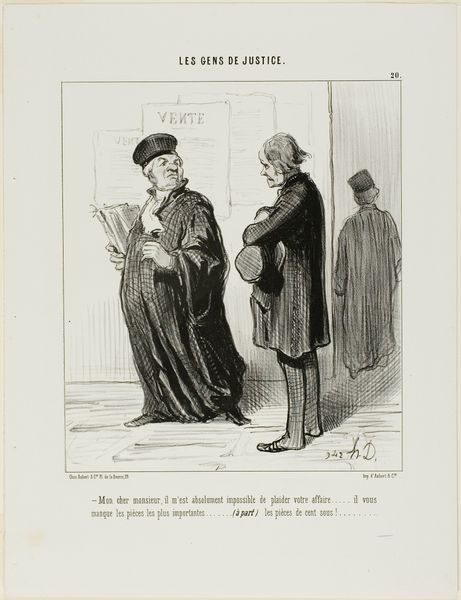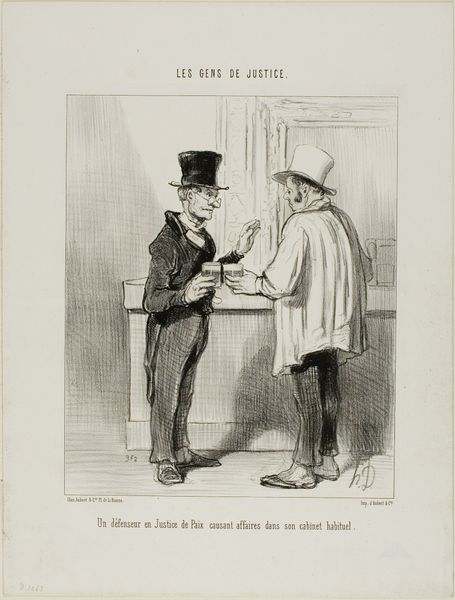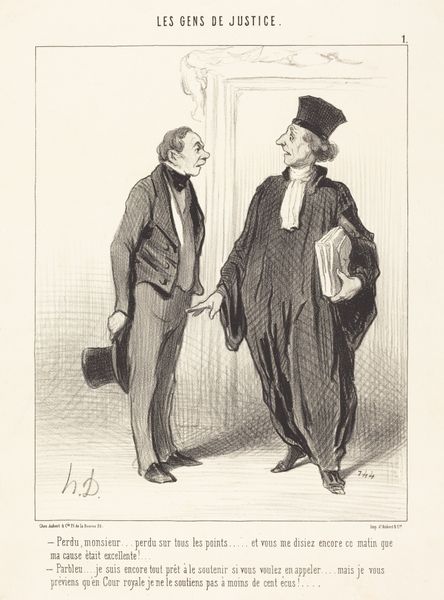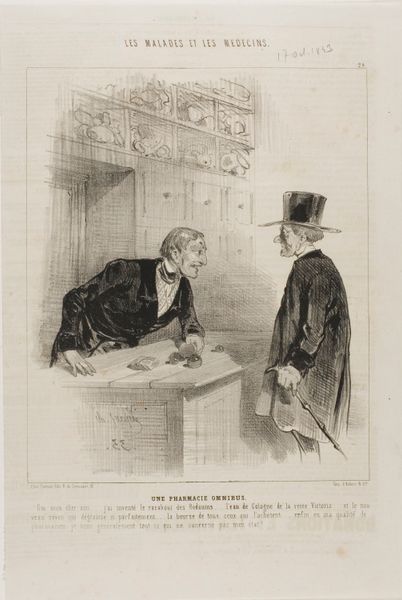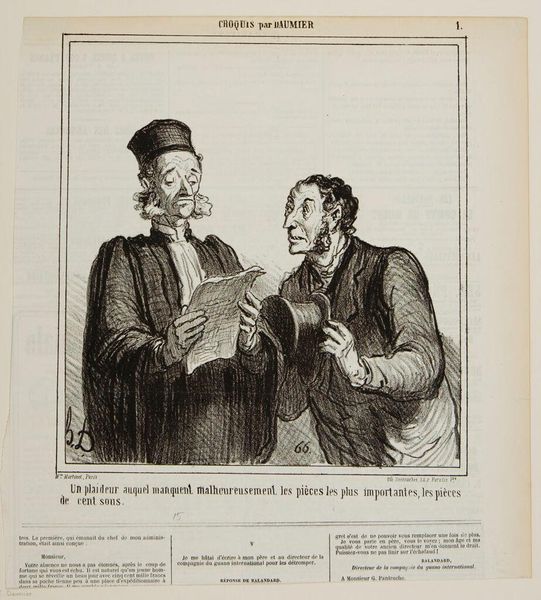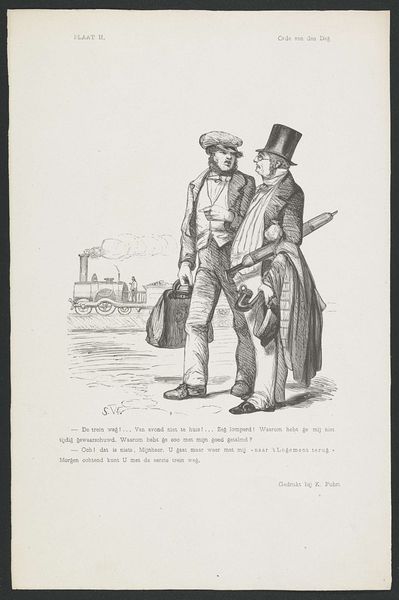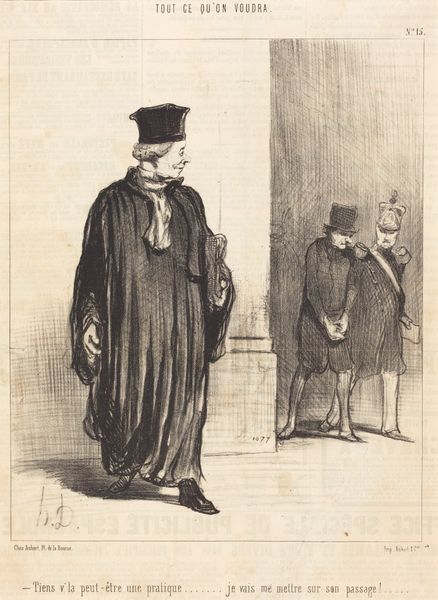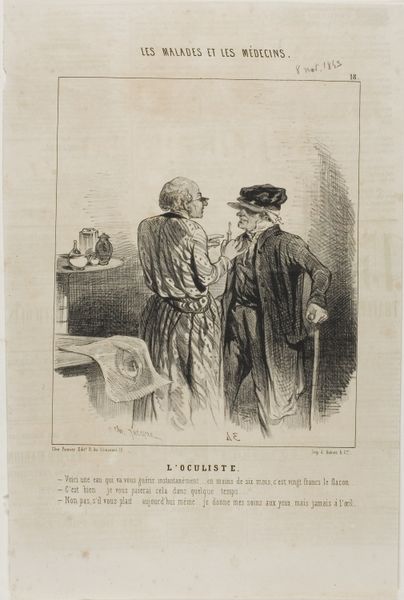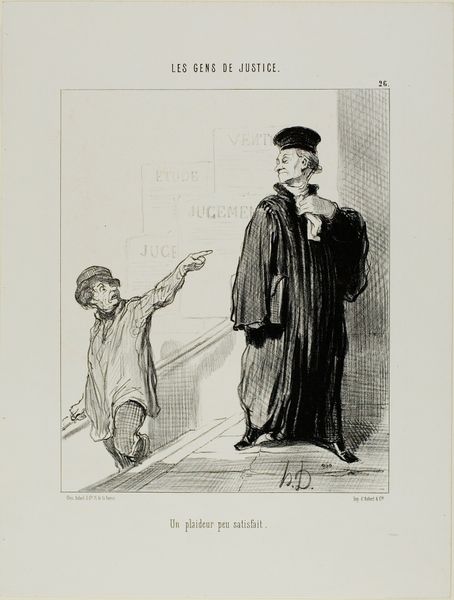
“- So even if I admit, between us, that I stole Father Jerome's watch, you won't drop my case? - My dear thief, you really don't understand my position... if there were no offenders there would hardly be any lawyers.... Now that I know you are guilty, I will work on your alibi...,” plate 28 from Les Gens De Justice 1846
0:00
0:00
drawing, lithograph, print, paper
#
drawing
#
lithograph
# print
#
caricature
#
paper
#
romanticism
#
genre-painting
Dimensions: 233 × 178 mm (image); 343 × 263 mm (sheet)
Copyright: Public Domain
Curator: Daumier's lithograph, "So even if I admit, between us, that I stole Father Jerome's watch...," from 1846, captures a darkly humorous exchange. I’m immediately struck by the economy of line—how much is conveyed with so little. The characters emerge with sharp clarity, set against a stark backdrop. Editor: I'd venture to say that this image screams 19th-century French corruption. Look at the lawyer: radiating an air of smarmy self-assurance. And what of the thief’s clothes, so clearly setting the man outside formal society? What does Daumier mean to imply about how power really works here? Curator: Exactly. Note the layering of lines, creating a density of form around the lawyer that gives him volume and a sense of weightiness compared to the rather spindly, contour-defined thief. His billowing robe becomes almost sculptural, emphasizing his dominance within the pictorial space. Editor: That legal robe represents the system, doesn't it? The socio-political forces that shape lives. Daumier, ever the social critic, lays bare the self-serving mechanics of the justice system. It isn't about justice, it's about…lawyers making a living off of crime. Curator: The reduction of forms lends itself perfectly to satire. Facial features are subtly exaggerated—a hawkish nose, a smug curl to the lips. It allows Daumier to make them both readily identifiable and broadly representative of types within society. It becomes a commentary on social roles. Editor: And considering that this is one plate from a broader series, "Les Gens de Justice," one might assume this isn't just about these two people; it’s about a pattern of corruption woven into the fabric of Parisian society. The question then becomes what part the rising urbanism played in this decay? How does Daumier's print enter a wider commentary? Curator: Indeed, it seems Daumier found a perfect formal vocabulary to reflect a complex interplay of character and societal ill. Editor: Leaving us to question how much, ultimately, has changed? A sobering reflection delivered with a deft hand.
Comments
No comments
Be the first to comment and join the conversation on the ultimate creative platform.
